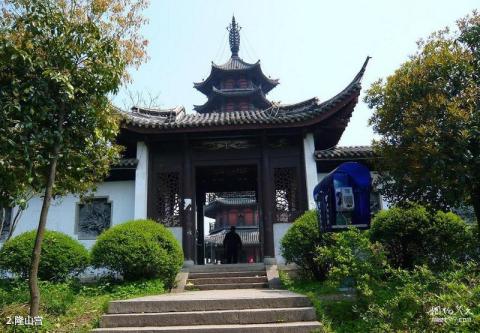
Introduction to Longshan Palace: This ancient building is Longshan Palace. It is located at the foot of the mountain on the northwest side of Longshan. It is a late Qing Dynasty building. It has two entrances at the front and back. This is the front hall, which is five rooms wide and 14.4 meters wide. Inside is the main hall, which is also five rooms wide and 14.2 meters wide. Longshan Palace was the headquarters of the peasant uprising army of Pingyang Qianhui when they besieged Ruian County in the 11th year of Xianfeng Period in the Qing Dynasty. In the eighth year of Xianfeng in the Qing Dynasty (1858 AD), the Taiping Army advanced into Zhejiang and captured Chuzhou. Pingyang Zhao Qi, Zhu Xiushan and others founded the "Qianhui", a peasant uprising organization, in preparation for the Taiping Army's invasion of Wenzhou. Everyone who joins the membership will be given a copper coin with the words "Money Meaning" cast on it as a symbol. Because the Manchu government imposed excessive taxes and heavy taxes, the landlords were ruthlessly exploited, and the working people were desperate, so they joined the "Money Club" one after another. In just three years, the number of members grew to 70,000 to 80,000. So in August of the eleventh year of Xianfeng (that is, 1861), the uprising was officially announced and they attacked Wenzhou Prefecture. On November 27, they besieged Ruian City with their swords. At that time, the headquarters was stationed in Longshan Palace, where leader Zhao Qi and others directed the siege battle. The siege lasted for ten days. Later, the siege failed and was suppressed and surrounded by Qing troops, resulting in many casualties. In August 1982, Longshan Palace was listed as a Ruian County-level cultural relics protection unit.
